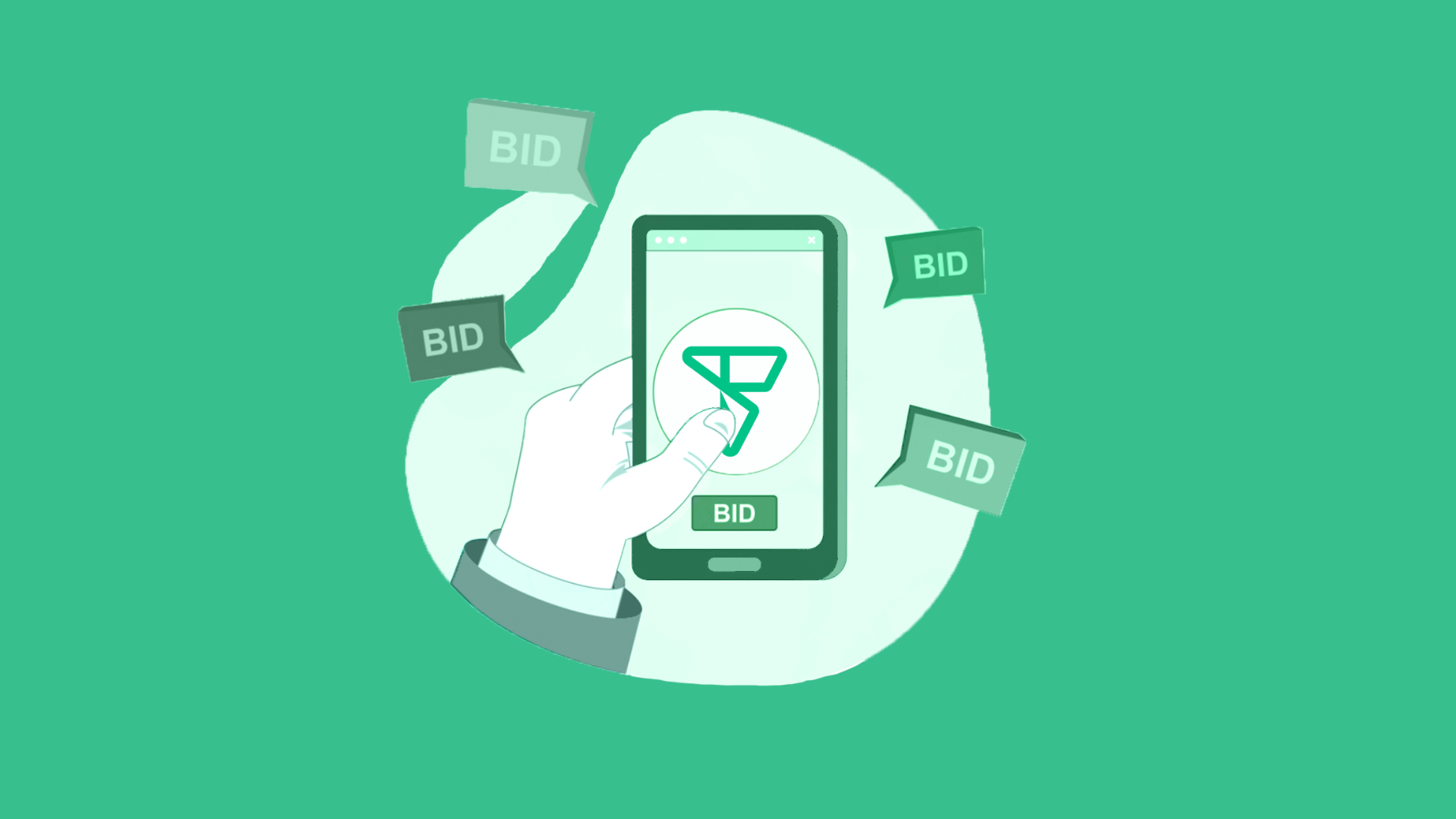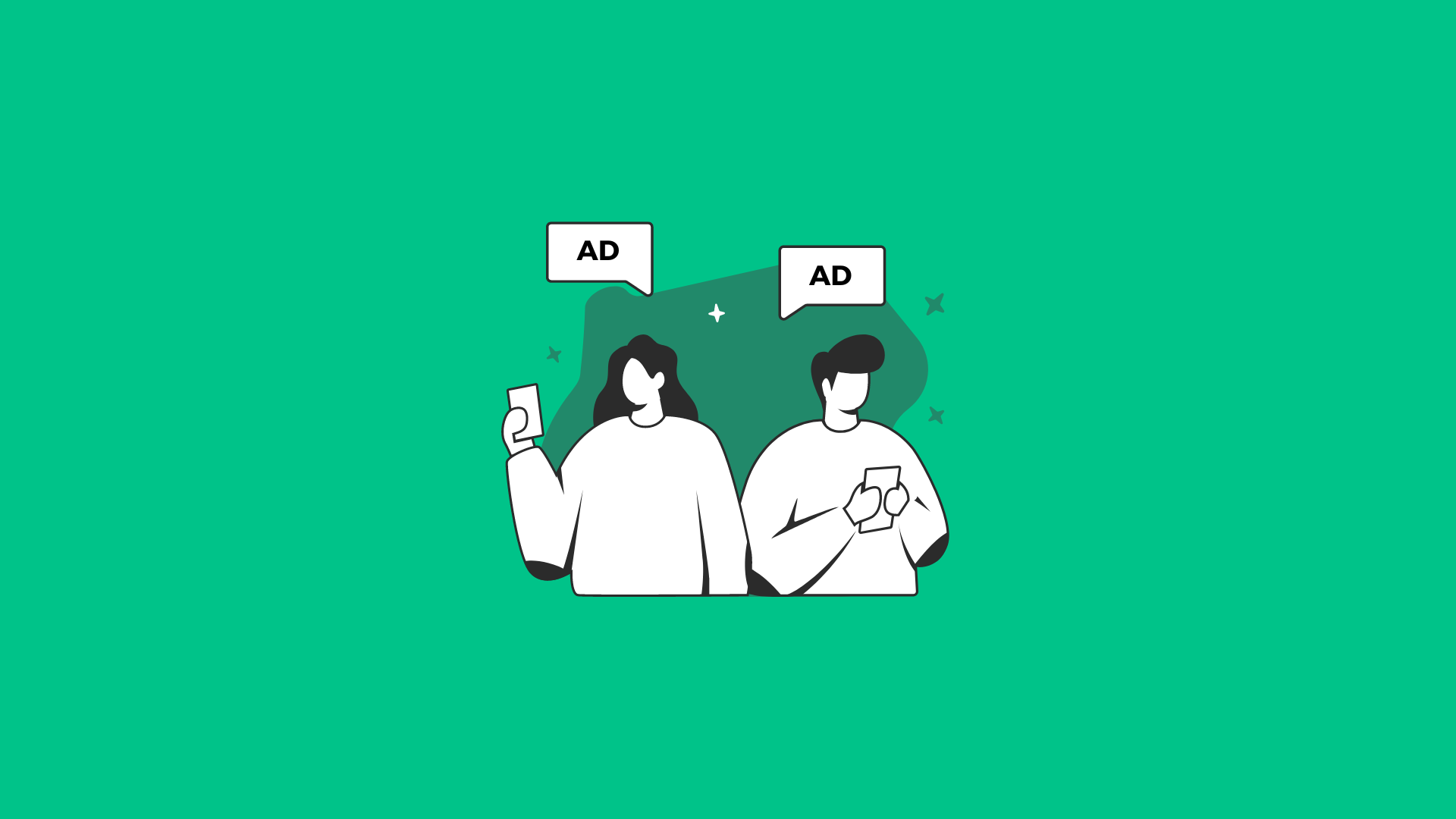A primary goal in the ad tech world is to simplify the relationship and media trading between advertisers and publishers. While the industry continues to evolve and work towards this goal, the digital advertising world still lacks a certain level of coordination.
It wasn’t until recently that publishers were responsible for managing multiple publishing platforms and monetization sources at once to maximize their overall ad revenue. Then, in-app header bidding came onto the scene circa 2015, rivaling Google’s waterfall method.
Where the waterfall method left both advertisers and publishers hanging to a certain extent, in-app header bidding provided a more efficient way for mobile publishers to monetize their ad inventory via ad requests.
In this article, we’re going to tell you everything you need to know about in-app header bidding, including how it works, how it benefits publishers and advertisers, and more.
What Is In-App Header Bidding?
Also referred to as advance bidding or pre-bidding, in-app header bidding is a programmatic advertising technique that allows mobile publishers to provide ad space to multiple supply-side platforms (SSPs), ad exchanges, or networks simultaneously. It’s also a notably more fair method when compared to the waterfall model, which consisted of unsold ad inventory being offered to the highest-ranking platforms first and remnant inventory being offered to the rankings below.
In-app header bidding automatically generates bids from multiple advertisers simultaneously by placing a publisher’s inventory across multiple demand-side platforms (DSPs). This is also in contrast to real-time bidding (RTB), which makes DSPs wait “their turn” to enter an auction. With in-app header bidding, DSPs can participate in equal measure, allowing publishers to receive demand-based bids for their ad space, leveling the playing field between the two parties in terms of traffic value bidding.
How Does It Work?
In-app header bidding works by gathering bids from everyone simultaneously. By “everyone,” we’re talking about DSPs, ad exchanges, and ad networks (as mentioned above).
All parties can enter the auction at the same time to bid on the same inventory. However, unlike the waterfall method, in-app bidding doesn’t stop the auction at the first “acceptable” bid. Instead, the in-app header bidding method depends on a string of JavaScript code that is embedded into the header of participating publishers’ websites. The function of this string of coding is to connect publishers’ websites to all potential sources that may be interested in buying advertisements.
So, every time a publisher’s page is loaded, advertisers and associated parties can bid on each impression on the loaded page. This allows the highest bid to win rather than stopping the auction at what’s been set as acceptable.
It also happens in a matter of milliseconds.
What Are the Benefits of In-App Header Bidding?
In-app header bidding comes with several benefits for both publishers and advertisers, which is why this method — along with header bidding — has become so popular.
Let’s start with the main benefits of in-app header bidding for publishers.
Higher Earnings
In-app header bidding allows both web and mobile app publishers to present their ad inventories to even more advertisers, SSPs, ad exchanges, and other ad networks than ever before. This enables publishers to get more buyers to place higher bids to advertise to their intended audience.
This allows publishers to maximize their earnings by selling their inventories at better CPMs.
Maximized CPMs
In-app auctions also enable publishers to see how much advertisers are willing to offer per impression in mobile apps before the ad is placed. This allows publishers to determine how much each ad impression is worthwhile, comparing the advertisers placing bids simultaneously. From there, the highest-bidding demand source will end up winning the impressions.
It’s like a systematic way of maximizing your CPM — with much less effort toward negotiations.
Higher Fill Rates
When multiple demand partners participate in an auction, fill rates automatically increase. This means publishers can place as many pop-under advertisements as they want on their website because these types of ads don’t occupy space directly on the web pages.
Better Inventory Value
Another benefit of in-app bidding is that it allows publishers to optimize the actual value of their inventory via header bidding. This is because advertisers are more inclined to bid more during in-app header bidding auctions to win their desired ad placements.
With prices for premium inventory increasing, publishers can further increase their overall ad revenue.
More Consistency
In-app header bidding is also more dependable regarding the flow of bids — due to the variety of bidders added to each auction, willing to bid at different price points for a better chance of winning a bid on as many premium impressions as possible.
Publishers can also use this opportunity to remarket cookie matches, which are some of the highest-paying CPM rates out there.
Lighter Tech Stack Load
Server-side header bidding offers a lighter tech load for in-app header bidding, reducing the need for multiple SDK integrations and shifting the SDK integration to the server. This simplifies the app’s codebase and reduces the SDK-related technical complexities.
Superior Management
The in-app header bidding ecosystem simplifies the entire auction management process. In header bidding, for example, a wrapper is implemented into the web browser and organizes multiple demand partners while also defining the rules for auctions.
This provides more control on a per-impression basis with, once again, little effort.
Now, let’s talk about the benefits of in-app header bidding for advertisers.
More Transparency
The in-app header bidding method allows advertisers to access more and better inventory via header bidding. It also makes it easier for programmatic buyers to access this inventory because it doesn’t require tag-based integrations, making all the ad space available visible rather than leaving them with blind spots.
In this type of bidding environment, advertisers will not only have access to all the inventory available from publishers, but they also have the ability to bid in several channels at once. Of course, if they’re not careful, programmatic buyers may bid against themselves.
More Access to Premium Inventory
Before the general concept of header bidding was introduced, web and mobile publishers had to sell their premium inventory in private marketplaces. This meant that the open marketplaces would only see lower-quality inventory.
When in-app header bidding came around, all of this changed — for the better. With all the data collected in each web page’s header, advertisers can now view publishers’ premium inventories and quickly place bids to secure their desired ad space.
Better Targeting and Further Reach
In-app header bidding allows advertisers to view ad inventories more effectively. Essentially, a website’s demographics and impressions get included in each ad inventory report, and all of this data directly help advertisers develop more effective targeting strategies to get the right ads in front of the right eyes at the right moments.
Moreover, this enables programmatic buyers to access their audiences on a much larger scale than ever.
Despite all of the benefits that advertisers are seeing with in-app header bidding, there are a few drawbacks. The main disadvantage for advertisers is the implementation of in-app header bidding.
Put simply, whenever new technologies in the ad tech world are introduced, it can take a significant amount of time for new and old users to learn them and get used to how a new system works. Even publishers have difficulties setting up in-app header bidding because the technology is complicated to implement.
Final Comments
In-app header bidding is one of the modern answers to demand source fragmentation, as it allows for multiple-party bidding at once. Advertisers can bid on ad impressions across as many sources as possible, while publishers can ensure that their inventories are sold at optimal prices. Not to mention, it offers a greater level of transparency in programmatic buying than ever before.
It’s essentially a more democratized advertising solution that benefits all parties involved. It also allows programmatic buyers to compete for ad space in real-time rather than being placed within a hierarchy of demand partners. This method completely levels the playing field by allowing advertisers and publishers to view each offering in detail compared to averages and limited data.
Of course, in-app header bidding is hardly the final culmination. Ad tech technology is ever-evolving to make programmatic media buying and selling more efficient and safer for all the parties involved. Keep up with the ad tech industry’s current and incoming trends by watching our blog and other resources.




